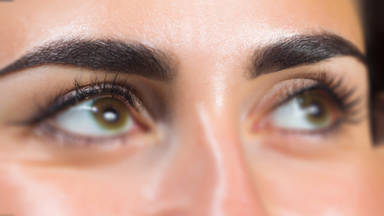
Dry manicures have the most advantages with regards to the hold that they have on your nail polish. You may be familiar with the term Wet Manicure, which begins with your mobile beautician soaking your fingers in warm water. The Dry Manicure is the exact opposite of the Wet Manicure, as it does not require any soaking time. This type of manicure will keep your nails in top condition before applying the polish. Soaking the nails in water can weaken your nails, but a dry manicure will keep them sturdy.
In this method, the nail's natural pink color and appearance is preserved without creating spots. You should keep in mind that nails are made up of a very thin and delicate layer, and that there is tissue around the nail area, which is called cuticles. The extra cuticle tissue around the nail must be removed, and the nail needs to be scrubbed and scratched prior to doing any cosmetic or beauty procedures.
If you plan to start the work with a scrub tip, it is better to use one with a pointed tip, although you can use any scrub tip you feel comfortable with. From the corner of the nail, where the cuticle tissue begins, work your way around to the other side, removing one or two thin layers of the cuticle. If you are using a scrub tip, you should not hold it vertically on your nail, but hold it in an angle and drag it across.
Applying the scrub vertically will cause a sinking line on the nail, ruining your manicure. It is best to hold the scrub diagonally at nearly 45 degrees so as to avoid leaving marks on the nail.
Following the procedure, you should use a nail nipper to take care of the extra tissue left behind after the cuticles have been removed with the scrub. You should still remove excess tissue from the finger with your thumb by pulling the skin upward. This will allow you to recognize every extra piece of tissue on the finger and avoid scraping it off. It is highly recommended to always use nippers with thin and sharp tips.
As a next step, you should scrub the nail evenly and thoroughly with a scrub around and on top of it. Hold the skin around the nail with your index and thumb and pull down to expose the sides of the nail so you can scrub it more effectively. Next, you can scrub the corners of your nails with a rugged scrubber by using the side that is designed for this purpose.
The surface needs to be scrubbed after the sides have been scrubbed. It is better to use a more soft scrub when cleaning the nail surface. In this area, you can use a buff, a soft scrub, or an older scrub that has softened over time.
Scrubbing the nail surface with a soft scrub is crucial, since the nine layers of the nail are extremely thin and its combined thickness is less than one millimeter. Scrubbing the nail excessively increases the chances of nail infections and fungus. The purpose of scrubbing the nail surface superficially is only to remove oil and shine from the surface and prepare it for a manicure or other procedure.
Putting the scrub against the nail surface from the curved side will help scrub the nail surface effectively. It is important to ensure that the nail's top curve is complementary to the scrub's top curve in order to reduce the risk of hand injuries. To clean the nail, use a pad or brush and remove debris and dust using a pad or brush as needed
After you have finished with the steps above, you can move on to the next step, which is buffing the nails. Using a buff, you can remove scratch lines on your nails. You should use the buff in the same manner that you used the scrub. Don't move the buff up and down on the nail. Instead, move it left and right.
You should then use your pad again to remove any residue or dust that may have gathered on the surface of the nail.
To scrub the nail, you need to use an even softer type of scrub that you have used for buffing it. In this way, you will be able to remove even the small scratches on your nails that were caused by your initial scrubbing.
Afterwards, using a nail shiner or nail cleaner will make your nails look great. Oily substances, such as glycerin, olive oil, baby oil, and any other substance containing a beneficial oily compound, can be applied to the tissue and cuticles. Once the ointment has been applied around the cuticles, you can spread the material around the nails using a pad. Your dry manicure will be complete when you apply the final polish, which ensures a shiny and beautiful nail.









